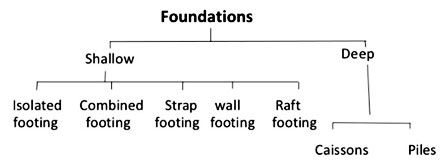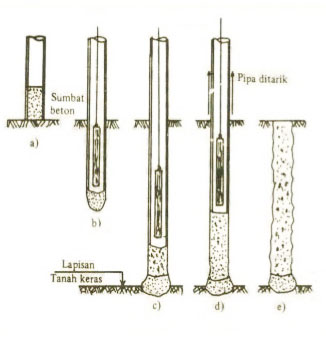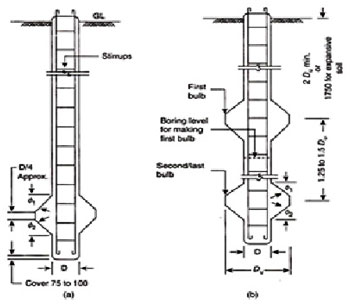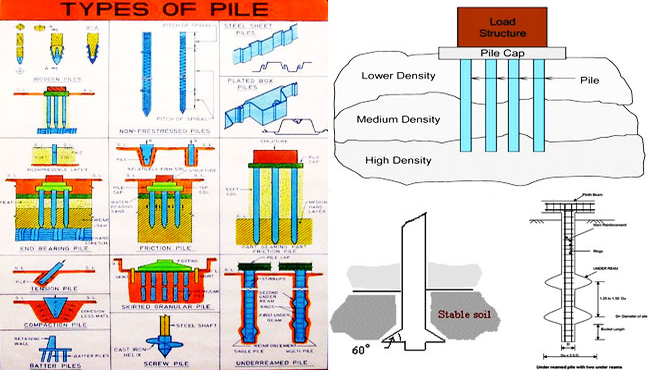Pile foundation types and installation procedures

A foundation is built up with several structural components. The objective of these components is to provide strong support to the columns and transmit the loads to the soil underneath.

If any building is supported with a substandard soil formation, the loads generated from the projected building can’t be defied. Here, lies the importance of pile foundation.
Piles stand for structural members which are formed with steel, concrete or timber.
Function of piles:
The prime objective of a pile foundation is given below:
- To transfer a foundation load to a solid ground
- To withstand vertical, lateral and uplift load
- Timber piles
- Concrete piles
- Steel piles
- Composite piles
Timber piles: - It is mostly effective for permanent works in the areas where there are adequate timbers. Timber can be utilized for long cohesion piling and piling underneath embankments. The quality of the timber should be strong and should be free from insects. For timber piles having length under 14 meters, the diameter of the tip should be in excess of 150 mm. If the length surpasses 18 meters, a tip containing a diameter of 125 mm is suitable. It should be kept in mind that the timber should have been provided in the perfect direction and should not be arranged into rigid ground since it can destroy the pile. If the timber is retained under the ground water level, it can safeguard the timber from decay and deterioration. To safeguard and enhance the strength of the tip of the pile, timber piles should be placed with toe cover. Pressure creosoting is the mostly recognized method for safeguarding timber piles.
Concrete piles: - These piles are categorized as precast piles and cast in situ piles. Precast piles are reinforced with steel and are produced in factories. The diameter or dimension of cross-section fluctuates from 200 mm to 500 mm. Square, circular and octagonal sections are mostly found. The length of piles goes up to 20 m. They are supported with steel shoe at the lowest end. These piles have the strength to bear moderately large loads. These piles have good resistance capacity against biological and chemical actions of the soil. The drawback of these piles is that long period is required for developing them. Besides, their weight is very large to deal with.

(Pressure Pile)

(Under-Reamed Pile)
Steel piles: - Steel pile/ Iron piles are perfect for managing and driving in long lengths. They contain considerably small cross-sectional area along with high strength to transform penetration smooth in rigid soil. They can be sliced easily or connected with welding. When the pile is pushed into a soil containing low pH value, then there is possibility for corrosion. To get rid of this issue, tar coating or cathodic protection is provided in permanent works.
Composite piles: -In this type of pile, various materials are integrated. It is found that the section of a timber pile that is set up over ground water could be exposed to insect attack and decay. To resolve the issue, concrete or steel pile is utilized over the ground water level, whereas wood pile is set up underneath the ground water level.

